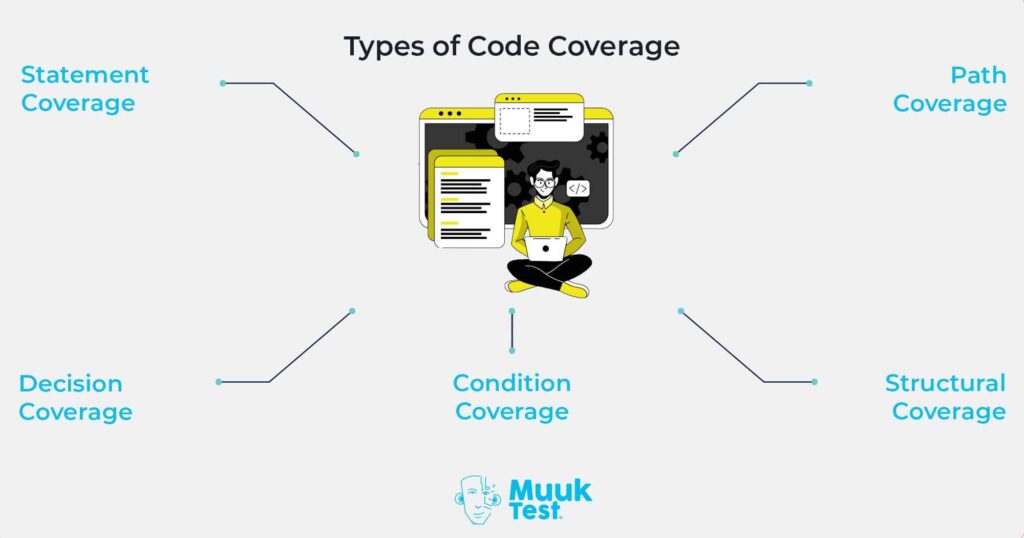As a software tester, one of the main goals of our work is to ensure that the software being tested is high quality, runs smoothly, and meets the requirements of the end-users. Test coverage is an essential aspect of software testing that you need to know to achieve these goals.
While Test Coverage might be a common term used in our daily processes, are we using it enough? Once a production defect arises, the first thing that comes to mind is “Did we cover that scenario during testing?” We’ll then refer to our documentation and ensure that it’s covered or not.
While exhaustive testing is impossible, and probably a myth, high test coverage is achievable with techniques and tools. At the very least, we can ensure that our application is tested thoroughly based on the requirements, product knowledge, risks, assumptions, etc.
Key Insights
-
Test coverage measures how much of your software’s functionality or code is tested.
-
It helps detect untested areas, improves quality, and minimizes risk.
-
Common coverage types include statement, decision, condition, and path coverage.
-
High coverage reduces defects, boosts confidence, and lowers maintenance costs.
What is Test Coverage?
Test coverage is a measurement used to describe the degree to which the source code/requirements of an application are tested by a particular set of test cases. It's shown as a percentage that measures how much of the program code has been tested. Test coverage helps identify areas of the program that are not tested, so they can be tested to ensure the program works correctly.
For example, let’s say that there are 15 requirements. A total of 90 test cases were developed and tagged to 12 requirements.
Yet for some reason, the remaining three requirements are not covered by the tests. In this case, we would say the test coverage is 80%. This is an optimal coverage percentage.
Importance of Test Coverage
The importance of test coverage cannot be overemphasized. It helps ensure that your test suite is comprehensive and that all the critical functionality of your application has been covered. By ensuring that your application has high test coverage, you can be confident that it’s high quality and meets the requirements of the end users.
Test coverage can also:
- Identify errors and differences in system behavior.
- Identify gaps in requirements and design specifications.
- Improve system reliability, performance, and scalability.
- Identify areas for improvement and assist in the decision-making process for further testing or when to deploy a product.
- Identify development bottlenecks and ensure quality while also providing confidence to stakeholders.
- Minimize the risks associated with software changes, making sure that the system performs as needed even after changes are implemented
- Ensure system security by verifying that all components of the system are tested and covered, thus minimizing the chances of security breaches and data loss.
A high test coverage indicates that most of the possible scenarios have been tested, therefore reducing potential errors.
The Difference Between Test Coverage and Code Coverage
To implement high test coverage, you need to understand the Code Coverage which is usually confused with test coverage.
Test coverage measures the total amount of testing done on a project, whereas code coverage measures the percentage of the source code that has been tested. Test coverage is concerned with the efficiency of the tests, whereas code coverage is concerned with the overall effectiveness of the source code. Test coverage is concerned with implemented tests, whereas code coverage is concerned with code that has been evaluated.

There are several types of code coverage, each with its benefits:
1. Statement Coverage: The most basic type of test coverage, also known as “Line Coverage”, tests each line of code to ensure it is executed at least once during the execution of the program.
2. Decision Coverage: A more advanced type of test coverage, it tests each decision point and verifies that both the true and false paths have been taken and all statements have been executed at least once.
3. Condition Coverage: This is a more specific type of test coverage that tests all combinations of conditions within decisions. It covers all the possible outcomes that can occur within the decision and verifies that each condition is tested.
4. Path Coverage: Path coverage tests all possible paths through a program, including loops and branches. It is the most comprehensive type of testing available and covers every possible execution path in the program.
5. Structural Coverage: A kind of white box testing that tests how functionality is implemented in the program. It verifies that all logical structures like if/then/else, switch/case, and while/do loops are tested and executed.
Each type of code coverage has its advantages and disadvantages, but they all help to ensure that all the code is thoroughly tested before it is released into production.
Benefits of Test Coverage
- Identify Bugs Early: Test coverage aids in the early detection and resolution of defects. This is crucial to avoid unexpected behavior and costly corrections later on.
- Improved Quality: Having thorough test coverage improves the overall quality of the software product since more issues can be detected and corrected more rapidly. This contributes to the software’s increased stability and dependability.
- Increased Confidence: Comprehensive test coverage also contributes to the user and stakeholder’s trust in the software product. The knowledge that the program has been tested in a variety of environments might assist to increase trust in the product.
- Balanced Prioritization: Test coverage contributes to ensuring that testing is balanced across all aspects of the product. Without test coverage, there may be an overemphasis on certain software components while others go untested.
- Increased Scope of Testing: Test coverage ensures that all testable scenarios are adequately tested. Without test coverage, some cases may be dismissed or overlooked, potentially leading to future difficulties.
- Improved Documentation: Tests can also serve as documentation by demonstrating how specific features and functionality should work. This also aids in avoiding typical misconceptions about how applications should behave.
- Reduced Maintenance Costs: Testing efficiently will also reduce the time and resources required to perform maintenance, which may lead to cost savings. Most of the defects would’ve been uncovered at an earlier stage, allowing for more cost-effective fixes and less maintenance post-production.
Challenges Faced While Implementing Test Coverage
Even though test coverage is beneficial for all of the reasons described above, it’s not always easy to implement. There are several challenges to consider:
- Insufficient funding and resources: Adequate testing necessitates sufficient resources like systems, tools, hardware devices, and training/learning materials. Allotments, team size, and testing time are additional factors. These resources can be costly, and organizations with limited resources may be unable to hire testers or all the hardware devices needed for testing.
- Not enough time: Many times, test coverage is completed during the final stages of development, which can be a time-consuming process. Companies may not have the luxury of time to undertake thorough test coverage since time is critical when introducing a product to the market.
- Difficulties in Identifying the Test Cases: More sophisticated systems need more complex and many test cases to cover all conceivable situations and edge cases. It is difficult to develop and identify all of the necessary test cases, and a lack of appropriate test cases may result in bugs and issues.
- Not enough Automation Tools/Set-up: Manually setting up and designing tests might take a significant amount of time and work. Deploying automation technologies can help ease this, but doing so needs additional costs, resources, and training.
- Lack of domain knowledge: Throughout the testing process, it is critical to have knowledgeable and experienced testers who understand the application’s domain and user requirements. A lack of adequate domain expertise might make identifying and designing correct test cases and scenarios challenging.
- Difficulty in determining whether the tests are sufficiently comprehensive: Even after having selected the group of test cases and scenarios to test, it is difficult to determine whether the test cases are sufficiently comprehensive.
- Dependency on external factors: When we have some external dependencies like database, third-party API, etc, it becomes very difficult to keep the tests updated and cover the expected behaviors.
In Summary
Test coverage is an important part of software testing. It helps to ensure that all the code is tested and no bugs are left behind. It’s a powerful metric that ensures that the software meets the desired quality standards. It helps to identify areas of improvement and provides valuable insights into the effectiveness of the testing process.
By leveraging the power of test coverage, organizations can ensure that their software testing process is comprehensive and effective, leading to better quality assurance in their products. With test coverage, teams can ensure that their software is ready for release with confidence.
Test coverage is a crucial aspect of software testing that you need to understand to ensure that your application is of high quality, runs smoothly, and meets the requirements of the end users. By ensuring that your test suite covers all the levels of test coverage, you can be confident that your application is fully tested and meets the needs of its users.
Frequently Asked Questions
What is test coverage in software testing?
Test coverage measures how much of the application’s code or requirements are tested by your test cases. It’s usually expressed as a percentage.
Why is test coverage important?
High test coverage ensures that most scenarios and requirements are tested, reducing bugs, improving software quality, and increasing confidence in releases.
How is test coverage different from code coverage?
Test coverage measures how thoroughly the application has been tested (requirements or functionality), while code coverage measures which parts of the source code have been executed during tests.
What is a good test coverage percentage?
It depends on the system, but generally, 80% or higher is considered optimal. However, 100% coverage is not always practical or necessary.
How can I improve test coverage?
Use risk-based testing, automate repetitive cases, review requirements thoroughly, and leverage tools like MuukTest to speed up coverage and maintain accuracy.












